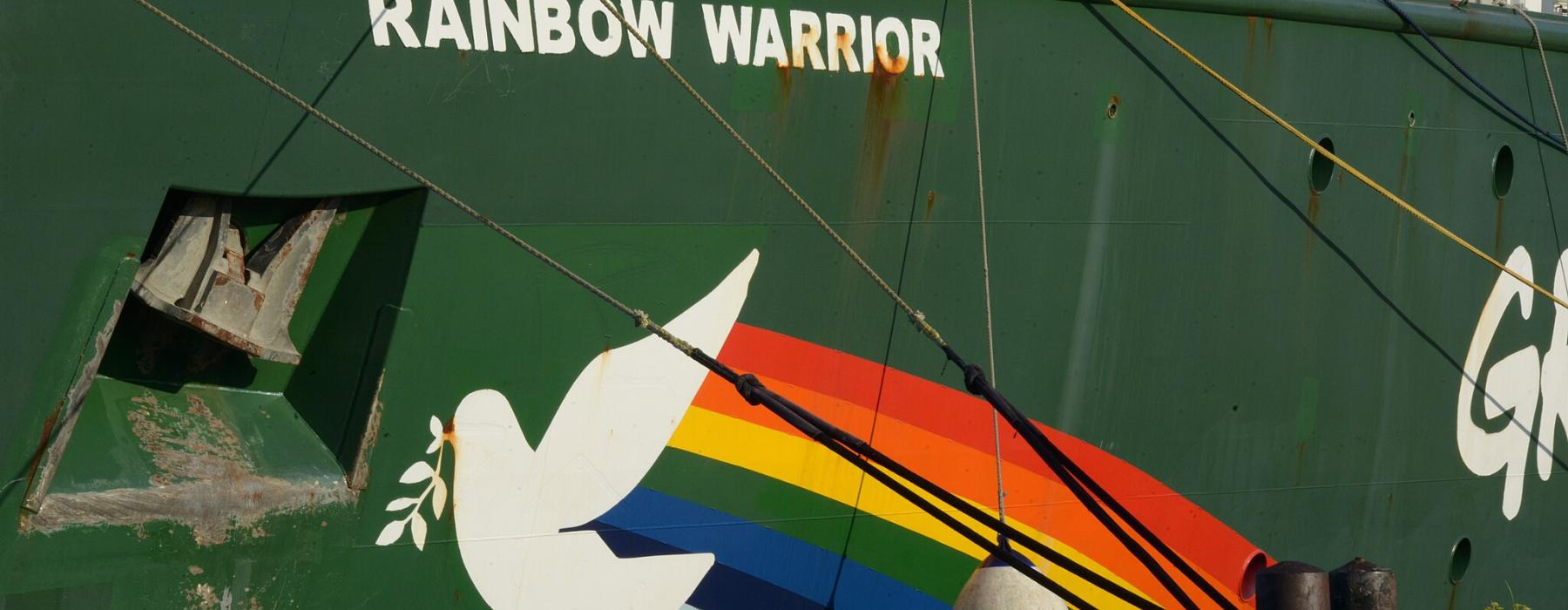
Greenpeace
Jean-Pierre Bazard Jpbazard, CC BY 4.0, via Wikimedia Commons
Greenpeace is an international environmental organisation, with a long-standing Quaker connection. In New Zealand, its main project, known as the Climate and Energy Campaign, focuses on promoting renewable energy sources, reducing greenhouse gas emissions, and advocating for policies that support a low-carbon economy.
This campaign aims to address the root causes of climate change by pushing for a transition away from fossil fuels and towards renewable energy sources such as wind, solar, and hydroelectric power.
Greenpeace New Zealand actively advocates for the adoption and implementation of renewable energy technologies, seeks to influencing government policies, encouraging investments in renewable energy infrastructure, and raising public awareness about the benefits of clean energy.
A significant part of the Climate and Energy Campaign involves opposing the expansion of fossil fuel extraction and use in New Zealand. Greenpeace campaigns against oil drilling, coal mining, and gas exploration, highlighting the environmental destruction and long-term consequences associated with these activities. They organize protests, engage in legal challenges, and mobilize public support to pressure the government and corporations to move away from fossil fuels.
Greenpeace provides public information about the impacts of climate change, the importance of renewable energy, and practical steps individuals and communities can take to reduce their carbon footprint.
Greenpeace lobbies for the implementation of regulations and incentives that promote renewable energy, energy efficiency, and emissions reductions.
Today, many Friends are involved with Greenpeace, by making regular donations and as members and activists.